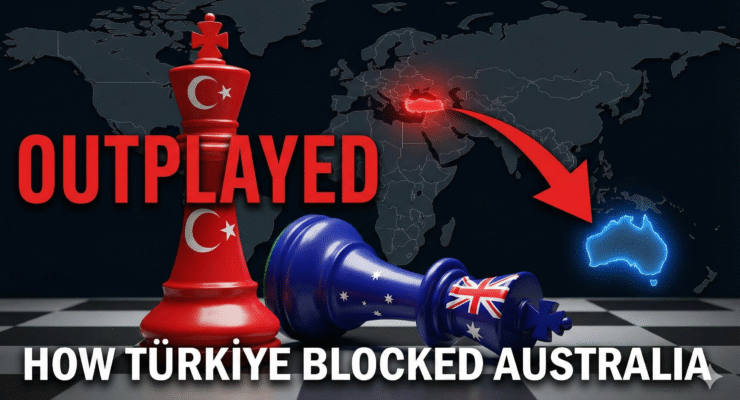
Free Power” or Just Another Energy Illusion?
When Chris Bowen announced a bold promise that households would get three hours of free electricity every day, it sounded like an instant win for beleaguered consumers. But as we dug deeper, the shine wears off fast. This isn’t so much a revolution as a headline-grab: clever, but flawed — and for many Australian households, little more than a gimmick.
Impacts on End-Consumers
The idea is straightforward: midday solar generation is flooding the grid, wholesale electricity prices often fall near zero, so the government will require retailers to offer a tariff with three free hours of power in the middle of the day. In theory, a winner. But in practice, there are massive holes.
First: Most households will not save money overall. What the government omits is how those “free hours” will be funded. The likelihood is higher of evening peak tariffs, increased daily supply charges or cost-shifting by retailers. The retail peak is not eliminated — just moved.
Second: The free period only helps if you can shift usage to midday. If you’re at work or the kids are at school, you’re not home to run the dishwasher, air-conditioner or EV charger during those hours. Renters and families, especially those without home automation or rooftop solar, will struggle. They may simply not benefit.
Third: Benefits skew heavily to higher-income households. If you’ve got an EV, a home battery, smart appliances, a swimming pool and a shiftable load, then you can take advantage of midday. Those are precisely the households with wealth and flexibility. Meanwhile, renters and low-income households gain almost nothing. If you don’t have solar, are not home during the free window, or don’t have a smart meter, you’re locked out. This flies in the face of “equity” rhetoric.

Fourth: Households may face higher evening electricity bills. It’s no stretch to expect that the “free” hours will be compensated by higher tariffs outside the window — especially between 4 pm–9 pm when families use most power. Once you factor that in, your annual bill may stay the same or even rise.
Fifth: The scheme requires a smart meter. Many households do not yet have one, and installation may carry costs or delays. Without it, you can’t join. Also, the smart meter gives the retailer greater control: required load shifting, possible remote interruptions or throttling. A trade-off many consumers would not have considered.
Sixth: There is a risk of increased electricity wastage. The messaging “use power during the free window” can encourage inefficient usage — running appliances unnecessarily simply because they’re free. That can add grid stress and, ironically, increase reliance on fossil-fuel generation later.
Seventh: Winter and cloudy days break the model. The midday solar surplus is seasonal. In winter or on overcast days, solar output drops and demand shifts to evenings — so the scheme’s benefit shrinks just when households need it most.
Eighth: The scheme may undermine rooftop solar investment. If ordinary households conclude that midday power is “free” anyway, they may decide not to install solar or batteries — weakening the business case for household energy independence. Over the medium term, this is a worry for the industry.
Political Considerations
Let’s peel the politics. The framing of “free electricity” is misleading — it is cost-redistribution, not cost-reduction. The government is repackaging surplus midday power rather than delivering sweeping structural affordability reforms. If the government truly wanted to lower bills, it would cap or reduce prices directly — rather than design an opt-in three-hour window.
The policy also carries the smell of a headline-driven announcement, crafted for media effect rather than long-term efficacy. Consultation with industry was minimal, and the risk is a policy built for optics rather than operational robustness.
Another concern is fairness. Households that have invested in rooftop solar and batteries may feel their contribution is being handed out in “free hours” to others. That breeds resentment and can undermine support for future reform.
System, Market and Technical Implications
From the system perspective, the policy is far from costless. Network and infrastructure costs — poles, wires, backup generation — don’t drop because power at midday is cheaper. These fixed costs must still be borne and are likely to be built into tariffs elsewhere.
The window for free power is clearly timed to the solar oversupply — midday, when wholesale prices are very low or even negative. But it doesn’t generate new value; it simply repackages what was already cheap. Meanwhile, the scheme may trigger synchronised demand spikes if loads shift en masse into that window — for example, many EVs charging at once — pushing local transformers and feeders toward overload.
More subtly, the policy could de-incentivise rooftop solar and battery investment. If consumers expect midday power to be free anyway, they may delay or forgo investing in their own generation, potentially stalling the transition path. Administration and billing complexity will rise as smart meters proliferate and tariffs become more intricate, higher overhead for retailers that may get passed on to customers.
Conclusion
There is some merit to encouraging load-shifting into daytime renewable surplus. But this so-called “free power” scheme is deeply flawed in its design, equity and execution. For the households most at risk — renters, low-income families, those unable to shift usage or install smart tech — the benefit is minimal. Meanwhile, the wealthier who already enjoy energy flexibility score disproportionate gains.
If you’re at home mid-morning with a battery and EV, great — you’ll likely benefit. But if you’re out at work, living in an apartment, or simply don’t have the hardware, you may end up paying more during peak evening times without noticing the benefit. And the broader system cost still exists.
In short, this policy offers the gimmicky appeal of “free power” while avoiding the tougher work of structural price reform. Unless the details change significantly, expect the real winners to be the few, not the many.
For reform to be meaningful, the government should instead tackle evening peak charges, supply-tariff design, broad smart meter rollout, and genuinely make rooftop solar and batteries accessible for low-income and rented households. Anything less is simply putting lipstick on an energy pig.



